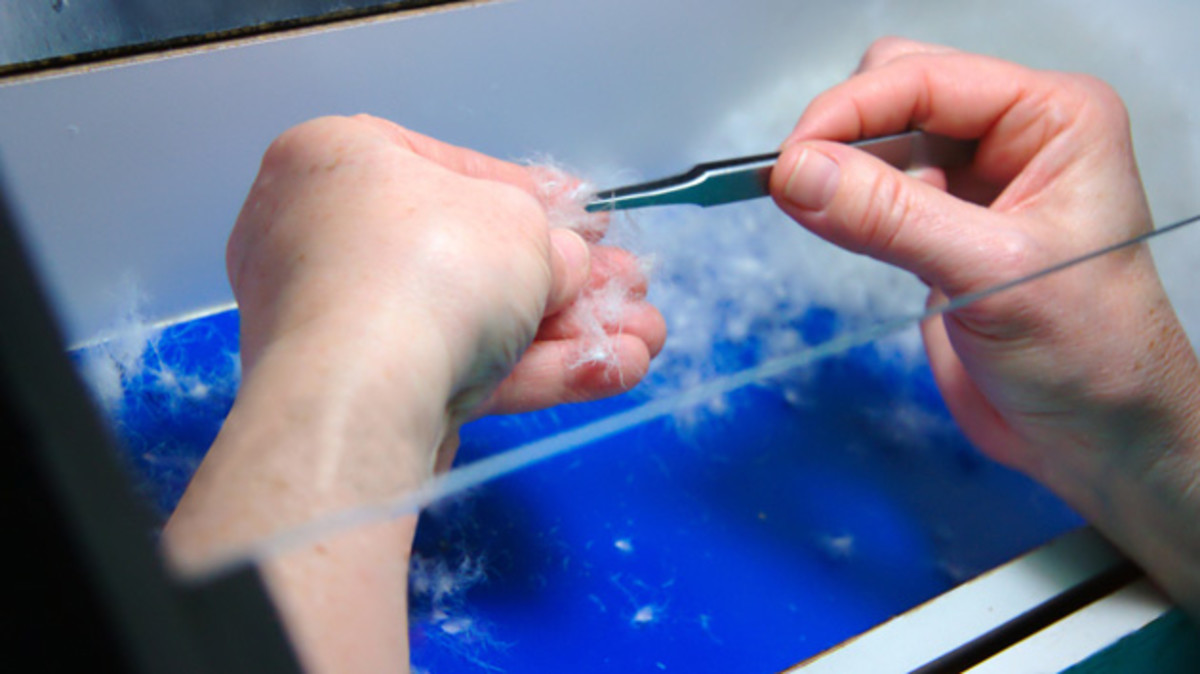How PrimaLoft created a goose-synthetic down hybrid material

PrimaLoft’s new Performance Down Blend hybrid construction required such a different method of manufacturing cold-weather insulation they can’t even talk about it. What Vanessa Mason, director of engineering technology for the New York-based insulation company, could tell Edge, though, was all about how creating a new hybrid down blend grabs the best attributes from natural goose down and diminishes a goose’s negative qualities.
For the uninitiated, nothing in the world insulates as well as goose down. But when goose down gets wet, that insulation falters.
“Goose down offers incredible warmth, lightweight comfort and great packability,” Mason says, “but when it gets wet from either precipitation or perspiration, it loses its ability to retain heat.”
Making your eyes—and brain—happy with long-wave blue light lenses
PrimaLoft set out to create a hybrid blend that helps solve the issue. The new Gold blend—PrimaLoft says it is a global first for its style of hybrid—gives the warmth equivalent of 750 fill goose down in a water-resistant technology that maintains 95 percent of its warmth, even in wet conditions. Plus, the blend dries four times faster than standard goose down.
To get there, PrimaLoft blends 70 percent premium quality goose down with a 30 percent mixture of its PrimaLoft ultra-fine fibers (the silver version is a more cost-effective 60 percent duck down with 40 percent PrimaLoft fibers). The synthetic insulation uses a small diameter, ultra-fine polyester fiber finished with a proprietary treatment that “makes the product warmer, softer, drier, more breathable and compressible than any other insulation currently on the market,” Mason claims.
An independent test from the International Down and Feather Testing Laboratory (IDFL) in Salt Lake City backs the PrimaLoft claim. “In early years, a blend was easy to recognize and components were less complex to test,” says Ingrid Sanabria, IDFL’s global lab manager. “Today, a blended product looks just like pure down and one of the companies that successfully blended synthetic fibers with down is PrimaLoft.”

The down and synthetic fibers intimately blend during the propriety manufacturing process, commingling to the point the IDFL had to decipher a new testing process in order to successfully separate the raw insulation for proper calculation of the down-to-fiber ratio.
“In order to make this product a success and avoid separation issues with the down and fibers, we had to create a brand new blending process for our manufacturing,” Mason says about the patent-pending design.
Using glass bead-woven fabric, Sugoi bike jacket bursts with reflectivity
With an equivalent warmth and weight, Mason says the blend ups the drying time and wet-weather performance. “Knowing their gear will withstand not only cold, but also extremely wet conditions gives consumers the freedom to go further and into more diverse climates,” she says.
Spun off in 2012 from Albany International as its own entity, Mason says the freedom allowed PrimaLoft to invest more resources into research and development. The result has the new blend showing up in a variety of high-end products for this fall/winter for companies including Helly Hansen, Black Diamond, Under Armour, adidas Outdoor, Westcomb, Sherpa Adventure Gear, Sitka and more.
As goose down prices continue to rise, finding the ideal insulation without losing the warmth remains the ultimate goal of cold-weather gear manufacturers. PrimaLoft’s hybrid approach has them commingling with a goose.
Tim Newcomb covers stadiums, design and gear for Sports Illustrated. Follow him on Twitter at @tdnewcomb.
